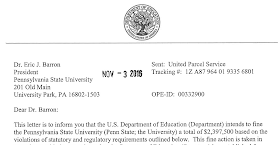(Pix © Larry Catá Backer 2016)
X's mom died of heart disease when she was 16, her father is disabled, and she is his custodian. X cares for her sister's kids when she needs to make extra money to put food on the table. Z's mother died in a car accident when he was 12, with no life insurance, his sister is disabled and he is her care giver in their small apartment. This is all they can afford; to make ends meet and because of the medical equipment required for care, he sleeps on the couch......Today is a bad day; no transportation. X is lucky. She managed to borrow a car, no insurance though. X is picking up Z, her study buddy Z so they can both get to class. Without their mutual support, they would be unable to survive the stress of their personal and academic lives. Both X and Z look to their faculty for support but expect nothing from those who run the institution. If our administration had half of the chutzpah of these students...... I am lost here....These are the circumstances of a significant enough portion of the students who seek the fulfillment of the hope that is at the very center of the promise of post secondary education in contemporary American colleges. How does an academic institution practice being the sort of student centered place that the typical institution trumpets from the lofty speeches of its administrators to the pages of its social media products? The answer, increasingly is that they may not.
This post considers the problem of being student centered for the contemporary American university and the growing chasm that separates administrative formalism of the concept (through rules and aspirational sentiments) as against its functional realization.


